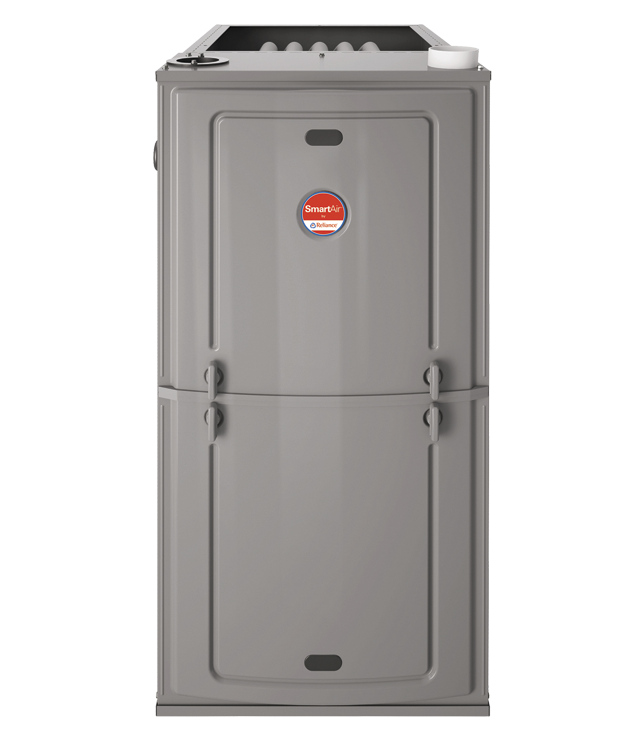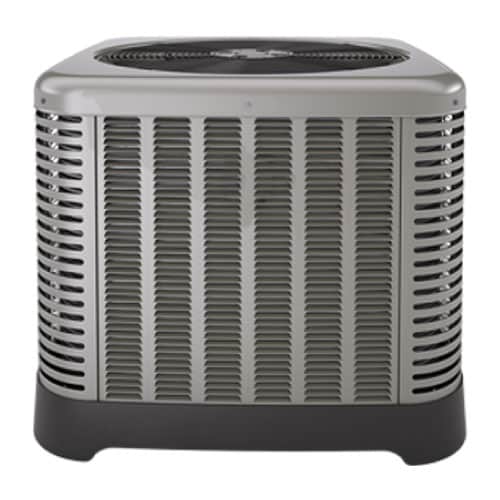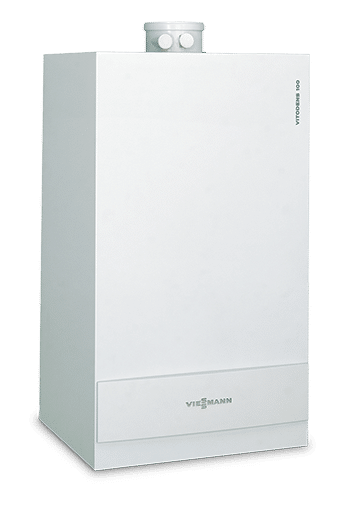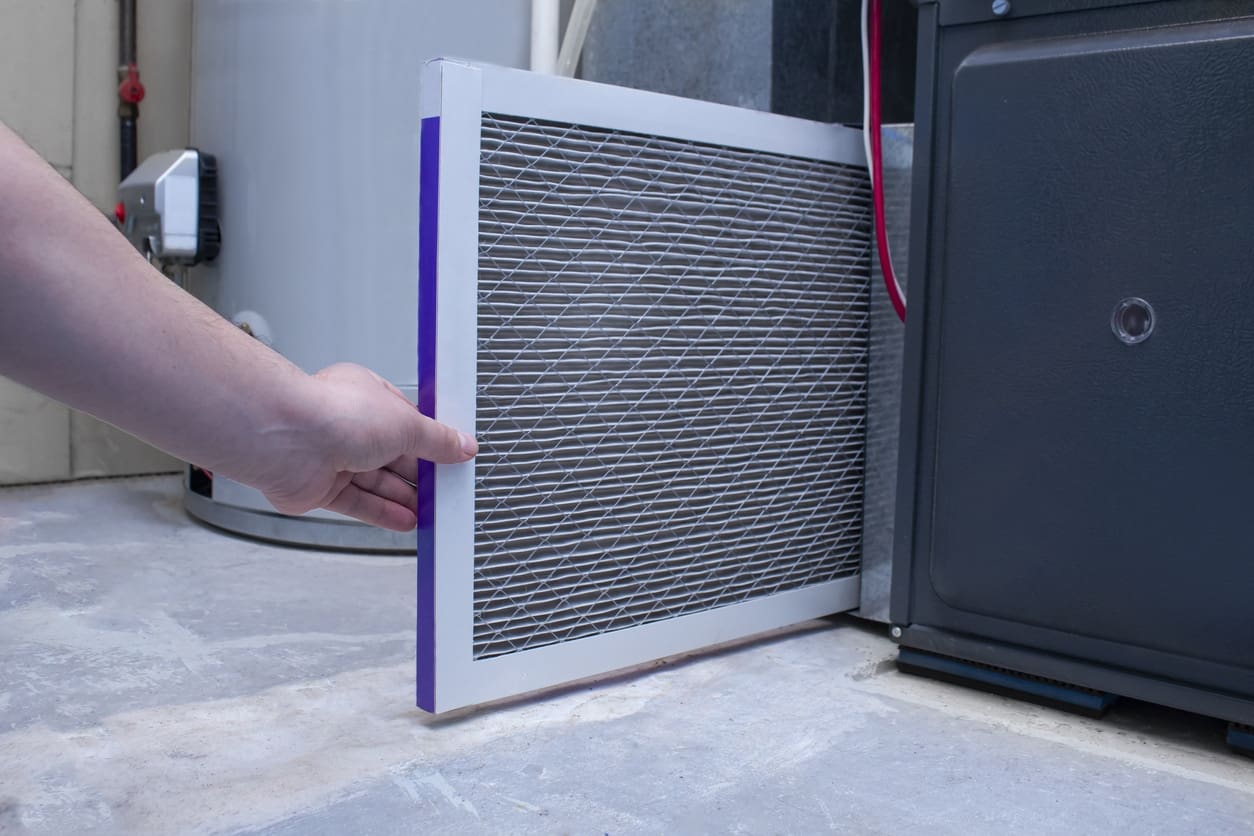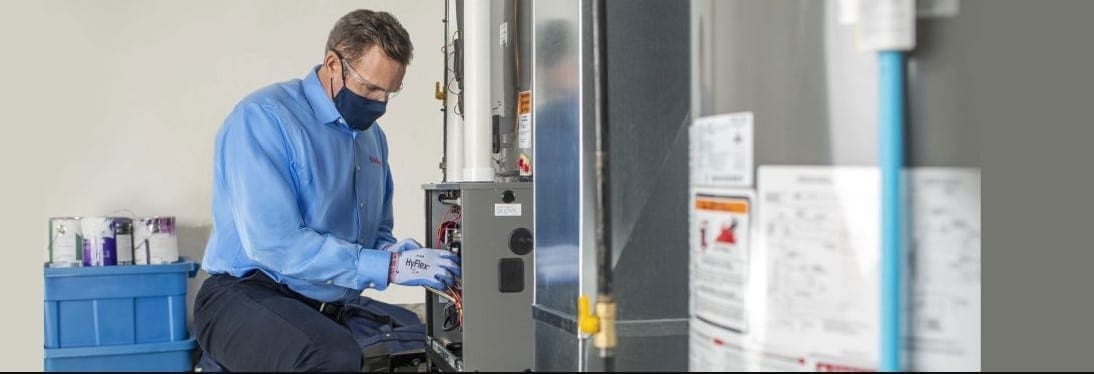Updated January 2025
The Ultimate Guide to Choosing the Best Furnace or Heating System for Your Home.
Are you ready for winter? In Canada, we know the importance of making sure your home is ready for the extreme wind, snow, ice and sub-zero temperatures our winters can bring.
Is Your Home Winter-Ready?
In Canada, harsh winters with extreme wind, snow, and sub-zero temperatures make it crucial to prepare your home with the right heating system.
Why It Matters:
Staying warm and comfortable all winter long begins with selecting a heating system that’s efficient and reliable. Whether you’re upgrading your furnace, considering a furnace repair, or looking to reduce energy costs, this guide provides essential information to help you make informed decisions about your home heating.
What You’ll Learn:
- How to choose the best furnace or heating system for your specific needs.
- Tips for maintaining your heating equipment for peak efficiency.
- Ways to save on energy bills this winter.
- Start preparing your home today with our expert tips and insights on finding the ideal heating solution for your winter comfort.
10 Questions This Guide Will Answer
Buying a new heating system — Where to start?
The process of finding the right heating equipment for your home can often feel like an overwhelming task. There are a variety of options to consider and, depending on the needs of your home, there are different features available to customize your equipment for optimal comfort.
To help you navigate through this complex buying or renting decision, below are some details about the various options and answers to common questions about home heating.
Select heating system type:
Furnaces — what to know
To tailor a solution to your home, we recommend having a trained professional assess your needs and recommend what is best for you and your home. Learn more about booking an expert in-home consultation here.
Different Furnace Types
There are three main types of furnaces: single stage, 2-stage and modulating furnaces. All three types of furnaces are great options for heating your home. Finding the right one for you comes down to your home, budget, and desired level of efficiency.
Single Stage Furnace:
Single stage furnaces are the most basic and commonly installed type of furnaces. This type of furnace only has one d setting. When on, your furnace operates at the maximum flame setting—there is no middle ground between the system being on or off.
This type of furnace often comes at a lower up-front cost but is not the most efficient option.


Two-Stage Furnace:
Two-stage furnaces have two different settings when your furnace is on, a high setting as well medium intensity setting to deliver a wider range of operation. This type of furnace can help to give you more temperature control in your home.
The furnaces are more expensive than the single stage options but are generally more energy efficient as there are different levels of heating available.


Modulating Furnace:
Modulating furnaces offer an advanced type of heating technology that delivers more even heating throughout your home. With a modulating furnace, the flame increases and decreases in finer increments to help maintain your home’s temperature. This reduces temperature fluctuations and helps meet your comfort needs more precisely.
Modulating furnaces are the most expensive to purchase upfront but will deliver consistent heating most efficiently.


Upgrade your home comfort with our special offers
Check Out Our Offers Today!

Energy Tip
Before buying check the equipment’s Annual Fuel Utilization Efficiency or AFUE rating. The higher the AFUE is the more efficient your furnace is.
Technology Found in Today’s Furnaces
New furnaces have a variety of advanced features to help reach optimal comfort and ensure maximum efficiency. Here are a few of the new technologies found in today’s furnaces:
Condensing Technology:
In a condensing furnace, the exhaust is moved through an additional (secondary) heat exchanger. More heat is extracted from the exhaust gasses and transferred safely through the home. This additional heat recovery allows for increased fuel efficiency.
Electronically Commutated Motors (ECM)
An Electronically Commuted Motor (ECM) is a motor technology in forced air heating applications that works to reduce the electrical consumption of the furnace motor. This technology can reduce your furnace’s electrical consumption by as much as 60% over a standard motor. These motors work with the furnace, adjusting speed to provide adequate air flow. Less electrical consumption results in a reduction of air noise in your home.
Electronic Ignition
Modern furnaces come with electronic ignition, which is a technological advancement replacing the pilot light system. With electronic ignition, fuel is only used when it is time to start the furnace. In older technology, a pilot light would use a small amount of fuel continuously, resulting in additional energy consumption.
Intelligent Digital Electronics and Wi-Fi
New furnaces have a digital integrated control board that control all the functions related to the heating/cooling operations in your home. It controls the gas valve, the igniter, the flame sensing circuit and blower fan. The control board also communicates with standard thermostats, smart learning thermostats, air conditioners and humidifiers.
Energy Tip
Ceiling fans aren’t just for the hot summer days! Switching your fans to spin clockwise in the winter help allows the warmed air to circulate throughout your home.
Different Fueling Options
Before you purchase a new furnace, consider which fuels are available in your area. You should review advantages and disadvantages of your available energy sources.

-
Gas Furnaces
-
Propane Furnaces
-
Oil Furnaces
-
Electric Furnaces
Gas furnaces are some of the most commonly installed heating appliances in Canada. This type of furnace is a top choice for many homeowners because it provides a safe, reliable and comfortable solution to heating homes. In recent years gas furnaces have also become more efficient and advanced, using sophisticated technologies to connect with other home appliances like smart learning thermostats.
Benefits of a gas furnace:
High Efficiency
In Canada, most new gas furnaces have efficiency ratings from 92-98% Annual Fuel Utilization Efficiency (AFUE), which let you feel confident that your new heating solution will not blow your monthly budget. The AFUE is a standard rating specified by the furnace manufacturer.
Inexpensive
Depending on the area you live in, gas is typically more cost effective than oil or propane.
Affordable Installation
Gas furnaces installations are usually very straightforward; a professional (and licensed) team should be able to install your unit at an affordable rate.
Wide Selection
There are many models of gas furnaces available, making it easy to find the right solution for your home and budget.
Smart home compatible
Modern units can be integrated with smart learning thermostats allowing you to control your home’s temperature from anywhere.
Things to consider when buying a gas furnace:
Availability
In rural areas, gas may not be available and there may be a more readily available or affordable fuel
Ductwork
Gas furnaces require ducts to circulate heat throughout your home
Maintenance
Gas furnaces need to be inspected regularly so it is important to schedule annual maintenance
Size
Gas furnaces are generally larger than a ductless split unit and will take up more space
Propane furnaces are a common choice for homeowners in rural areas or areas where other fuels are scarce, expensive or unavailable. To operate a propane furnace, a propane tank will be installed outside of your home and connected to your furnace. As the propane is used to fuel your furnace, the tank will need to be refilled by a local service company.
Benefits of a propane furnace:
Availability
Propane is readily available across the country, including remote areas
High Efficiency
Propane furnaces must meet a minimum efficiency standard of 92% but most new propane furnaces have AFUE ratings of 92% to 98.5% efficiency
Things to consider when buying a propane furnace:
Cost
It is often more expensive to operate than a gas model but is usually a more cost effective solution than an electric option
Refueling and storage
Propane tanks can only be filled by a licensed, trained and certified professional
Propane must be kept in government approved outdoor storage containers
Ductwork
Propane furnaces require ductwork to circulate heat throughout your home
Maintenance
Propane furnaces need to be inspected regularly by a trusted professional
If you live in a rural area where it is more difficult or expensive to get other fuel such as gas, you may want to consider an oil furnace. This type of fuel is readily available in most parts of Canada but has decreased in popularity over the years due to concerns about their operating cost, efficiency and emissions.
Benefits of an oil furnace:
Availability
Oil furnaces are often a good choice when other fueling options are scarce or unavailable
Most regions of Canada have access to oil
Smart home compatible
Temperature can be controlled remotely when you pair with a smart thermostat
Things to consider when buying an oil furnace:
Price
Oil furnaces are usually more expensive to operate than gas or propane furnaces
Storage
A tank needs to be installed outside of your home to hold the fuel
Efficiency
Oil furnaces tend to operate less efficiently than most modern gas and propane options
Ductwork
Ductwork is required to circulate heat throughout your home
Maintenance
Regular maintenance is required to keep the system operating efficiently
Electric furnaces heat air that moves through ductwork by a fan, but instead of gas, propane or oil fueled burners, these types of furnaces produce heat using electric heater elements controlled by circuit breakers.
The cost of operating an electric furnace is relatively high in most regions, limiting the popularity of the equipment.
Benefits of an electric furnace:
- Contribute almost nothing to carbon emissions in their own operation, when using clean renewable electricity
- Electricity can come from renewable sources or from using fossil fuels
- A flue pipe or chimney is not needed making them easier to install
- Viable options in areas where electricity is inexpensive
Things to consider when buying an electric furnace:
- More expensive to operate than gas, propane or oil furnaces, in most regions
- Be sure to compare heat pumps or, other electric options like baseboard heating, before investing in an electric furnace
Upgrade your home comfort with our special offers
Check Out Our Offers Today!
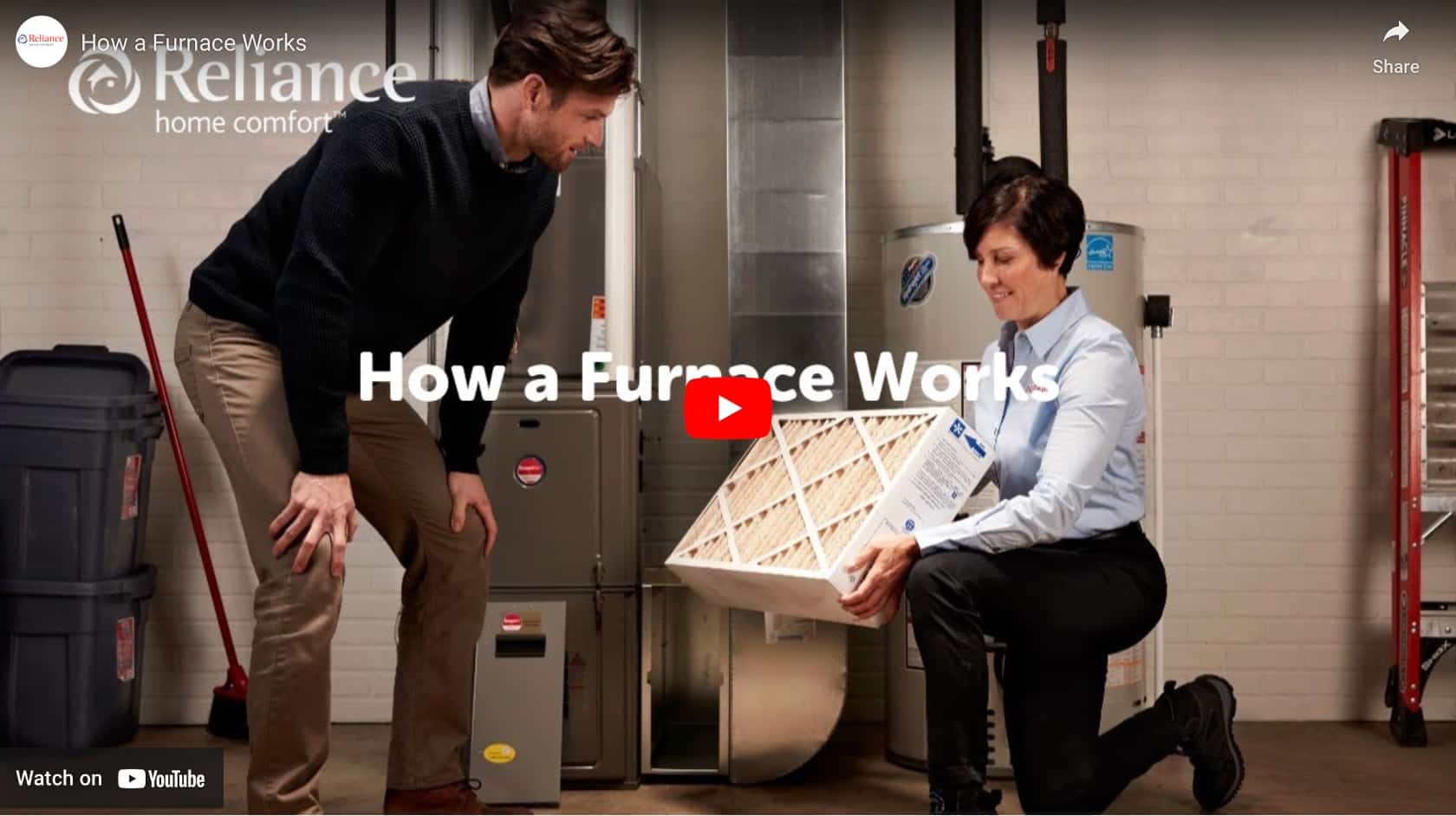
How a Gas Furnace Works
- Set your thermostat to a desired temperature, or program a temperature schedule.
- The thermostat sensor monitors the temperature, and when needed, calls on the furnace for heat.
- The furnace control board switches on the induced draft motor.
- A pressure switch senses a pressure change and the igniter is activated.
- The fuel is released to the burners.
- Burners ignite in sequence, warming the heat exchanger(s).
- A flame sensor allows fuel flow to continue as long as it is burning.
- The blower fan moves heat into the ducts.
- Air flow is monitored by limit switches.
- The thermostat signals that it is satisfied and the control board shuts off the gas.
Recommended Furnaces 97%+ AFUE
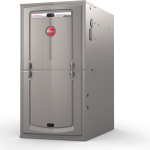
Trane XC95m
Converts up to 97% of every dollar spent on gas into heated air for your home. Many stages of heating.
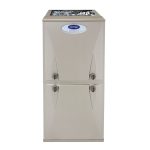
Carrier 59MN7
Converts up to 98% of every dollar spent on gas into heated air for your home. Many stages of heating.
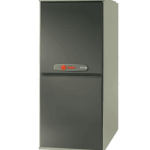
Smart Air R98V
Converts up to 98% of every dollar spent on gas into heated air for your home. Many stages of heating.
Recommended Furnaces 96%+ AFUE
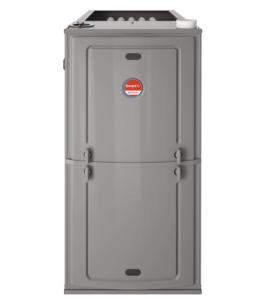
SmartAir R96V
Converts up to 96% of every dollar spent on gas into heated air for your home. 2 stages of heating.
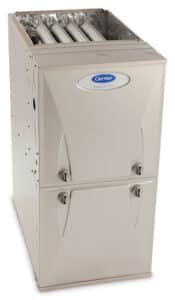
Carrier 59TP6
Converts up to 96% of every dollar spent on gas into heated air for your home. 2 stages of heating.
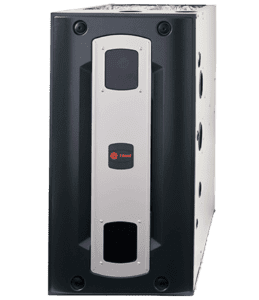
Trane: S9V2
Converts up to 96% of every dollar spent on gas into heated air for your home. 2 stages of heating.
Heat Pumps and Boilers
Depending on your home, budget and desired level of efficiency, a furnace may not always be the right option for heating your home. There are many great alternative options available.
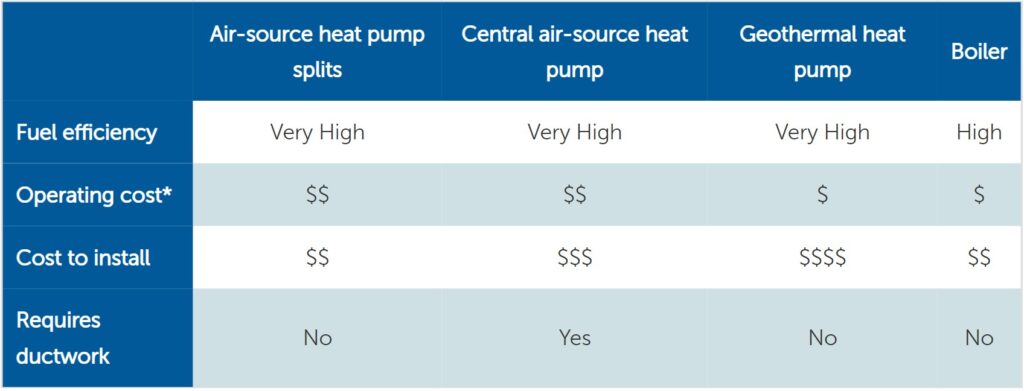
-
Air-Source Heat Pump Splits
-
Central Air-Source Heat Pump
-
Geothermal Heat Pumps
-
Boilers
An air source heat pump split is a compact, modern, refrigerant-based heating and cooling system. It consists of an outdoor unit and one or more indoor units, sometimes called heads. Splits were first popularized in Asia and Europe and are now becoming more common in North America.
The outdoor unit looks like a slim version of a conventional air conditioning unit. The indoor units are mounted in the ceiling, on the wall, or near the floor like baseboard heaters.
Benefits of an air source heat pump split:
- Installation can be done by most well-trained service experts
- Ductwork is not required, making it a great option for homeowners in condos or older homes
- Provides all-season comfort as a highly efficient, clean energy option
- Often less expensive to operate than fossil fuel based or electrical appliances
- Depending on the area that you live in, you could be eligible to apply for government incentives
Considerations of an air source heat pump split:
- Up-front installation costs for heat pumps can be high
- Older models may be limited in their heating capability in cold climates
- Some models are unable to manage humidity as well as other options
- A backup heat source is often required
Central air source heat pumps are similar to splits, but rely on ductwork to circulate both heating and cooling air in the home. The outdoor unit is called a condenser and the indoor unit is called an evaporator coil. It is an efficient, clean energy option that operates a lot like a traditional furnace.
Benefits of a Central air-source heat pump:
- Typically very efficient and low cost to operate
- Provide a clean energy solution for heating and cooling
- Have similar capacity and distribution to a furnace
Considerations of a central air-source heat pump:
- High up-front installation costs
- Ductwork is unique and may require renovations
- Backup heat source is often required
Geothermal systems are top of the line heating and cooling equipment. These systems are also often referred to as ground source heat pumps. Geothermal heat pumps change the temperature in your home by transferring heat between the home and the ground.
How it works
Geothermal takes advantage of a fundamental of basic physics: during cool seasons the temperature underground is warmer that the temperature of the outside air; and during warmer months it is cooler than the outside air. Ground source temperature differentials are smaller than the air sourced differentials, allowing the heat pump to remain in a more efficient range. Geothermal systems move heat using liquid rather than air.
Benefits of a geothermal heat pump:
- Clean energy option
- One of the lowest operating costs of any heating and cooling system
- Works well with hydronic systems and radiant systems
- Has excellent cold or hot climate performance
- Tends to last longer with less ongoing maintenance than other systems
- Relatively quiet
- You could be eligible to apply for government grants to assist with the cost of installation
Considerations of a geothermal heat pump:
- Installation requires specialized skills and cannot be performed by every HVAC team
- Tend to be the most expensive to install
- May require a large land area
- Not all soil types allow for installation
A boiler, or a hydronic heating system, provides heating by using a fuel source to heat a fluid (such as water or glycol) that is pumped through your hydronic heating system to various devices such as radiators or in-floor heating loops. Boiler heat does not require ductwork and is often be found in older homes.
Combi-units
A combi-unit is a heating source that can also provide hot water through your home.
Benefits of a Boiler:
- Ductwork is not required for operation
- Underfloor tubing can be laid under most flooring material to give you the luxury of heated floors
- Combi-unit options can accomplish both your home heating and water heater needs
- Operational noise is confined to the system and normally cannot be heard throughout the home
Considerations of a Boiler:
- Often come at a higher upfront cost than a traditional furnace
- Replacement parts can be expensive
- Cannot be used to cool your home
Recommended Heat Pumps
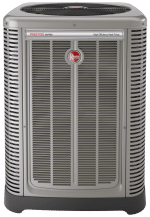
SmartAir RP20
Multi-stage heating and cooling. Pair with R96V to see how much you may qualify in rebates.
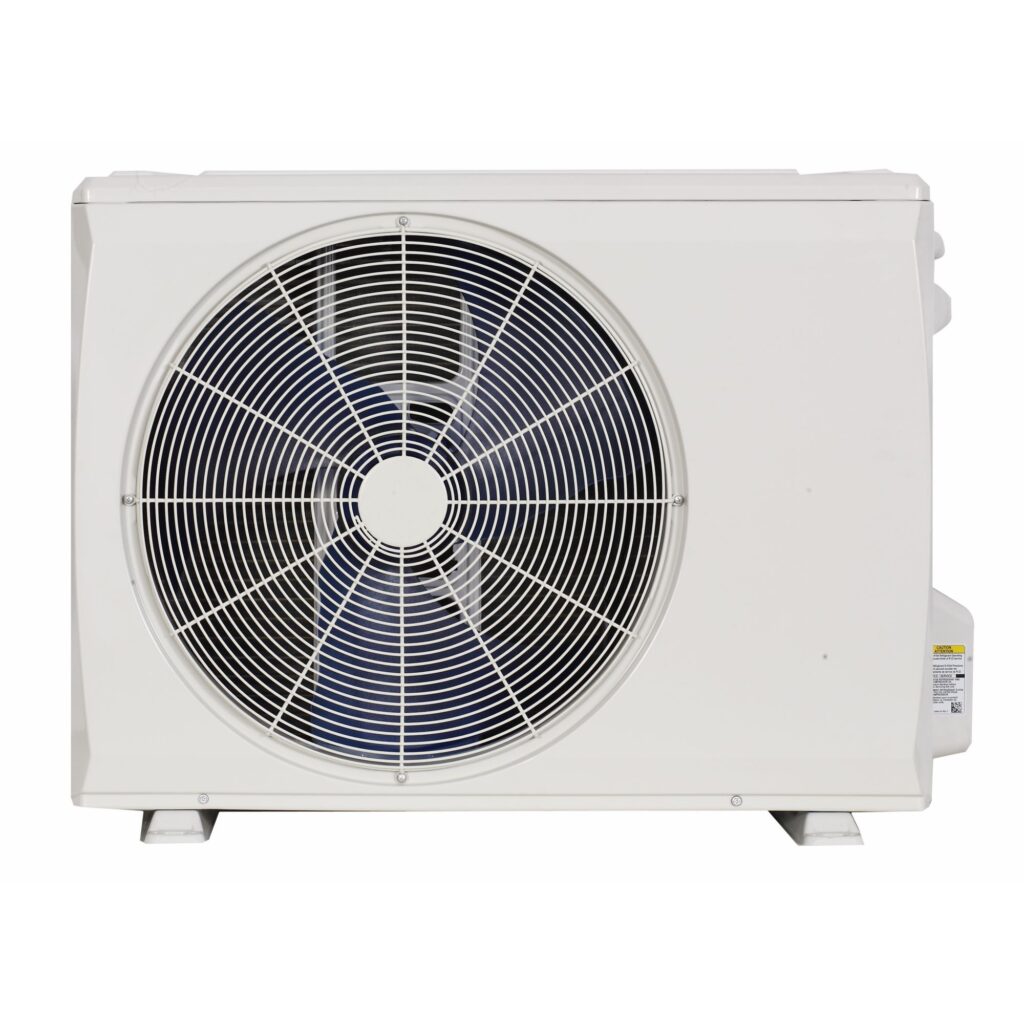
Carrier 38MARBQ
Multi-stage heating and cooling. Pair with 59TP6 to see how much you may qualify in rebates.
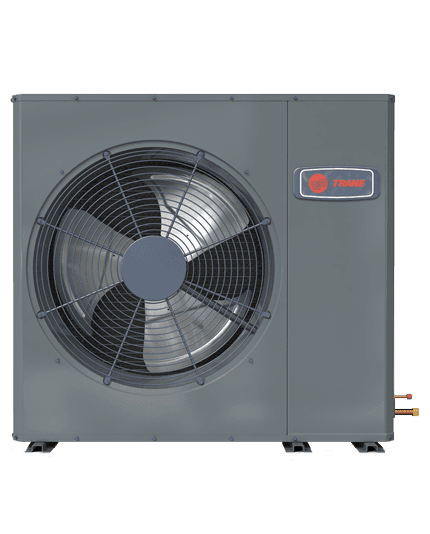
Trane: XV19
Multi-stage Pair with S9V2 or XC95m to see how much you may qualify in rebates.
Money Saver Tip
With so many rebates available, there has never been a better time to invest in a heat pump!
Getting Your New Furnace
Beyond selecting the right furnace type for you and your family, there are several other things to consider to ensure your unit is the right choice for your home and budget. Here is some information about furnace financing options, installation and accessories.
Should I rent or buy my new furnace?
One of the most important decisions when upgrading your heating equipment is choosing whether to rent or buy your system. Before making the decision, you will want to determine the equipment you are having installed, the total cost of ownership and the cost and effort of maintenance.

Need a new furnace air conditioner or hot water heater but not sure whether to rent or buy?
Regardless of your equipment needs, it’s important to know what’s right for you. Here’s what you need
to know to get started. A rental unit is a great option for a lot of homeowners as it gives peace
of mind. The repairs are always covered. Lifetime repairs and maintenance are included with your
rental so you’ll never be surprised with an unexpected repair bill. As a rental customer,
you’ll also have 24/7, 365 live telephone support and direct access to technicians
that know your equipment and have all the parts on hand to service it fast so
you never have to worry about being without heating, cooling or hot water. With rental,
you’ll also get the convenience of one low monthly payment that is easy to budget for.
Even with our most efficient units, there are no upfront equipment costs and you can take advantage
of any available government rebates. Plus, when you rent your heating or cooling system,
your annual maintenance is fully covered. That even includes the maintenance of your humidifier
and upgraded filters for optimal airflow. Buying is another great option. Buying your equipment
allows you to take advantage of special promotions or competitive financing rates so you can still
find the right equipment that fits your budget. Plus when you purchase your equipment, you’ll
still have access to Reliance’s large network of professionally trained technicians. We also
include standard parts and labour warranties on all of our equipment so that you will be covered
in the event of a faulty part or breakdown. You’ll also have the ability to keep your heating and
cooling equipment running efficiently by adding a Protection Plan to your purchase that includes
annual maintenance and allows you to avoid most unexpected repair costs. At the end of the day,
the best option is whatever suits the needs of you and your family. If you’re renting,
your unexpected repairs and annual maintenance for your furnace and AC are covered. With buying,
you’ll own your equipment and you’ll always have the option to cover repair and maintenance
costs with a Protection Plan after your warranty period. Whichever you choose,
you can Call on Reliance™ and schedule a time with our trusted Home Comfort Advisors. Our
Advisors will take the time to assess your needs and help you make the right decision.
Renting and buying are both viable options, and making the right decision really comes down to your needs, time and budget. To help you evaluate the two options, here are a few things to consider
| Buying | Renting |
|---|---|
| Upfront cost of system | No upfront cost – you pay through affordable monthly payments |
| Potentially take advantage of government mail-in rebates and incentives | Potentially take advantage of government mail-in rebates and incentives |
| May add value to your property | Covers maintenance and most repair costs |
| You can take advantage of special promotions | You can take advantage of special promotions |
| Responsible for all maintenance and repairs | Annual service, filters and humidifier pads are included with your Reliance™ |
Energy Tip
When you are selecting a new furnace check to see if it is ENERGY STAR® rated to make sure you are getting an energy efficient option.
Should I Buy My Furnace and Air Conditioner Together?
Your furnace plays and essential role in keeping your home warm as well as running your air conditioner in the summer. When it comes time to replace your furnace, consider upgrading your AC at the same time to help ensure you are getting the most out of your investment.
Benefits of replacing your air conditioner and furnace at the same time:
Energy Efficiency
Anytime you upgrade outdated equipment you could be investing in a more efficient system. Replacing both your furnace and air conditioner at the same time will help you maximize your energy savings.
Equipment performance
Since your furnace and air conditioner work together, replacing just one piece could prevent the newer piece of equipment from reaching its potential performance.
Potential savings
Furnace and air conditioners are often sold together, so if you decide to upgrade both there may be deals or discounts available. Having both pieces of equipment installed at the same time may also result in cheaper labour and installation costs.
Energy Tip
A furnace that has been professionally sized by a licensed technician will run more efficiently than an incorrectly sized unit.
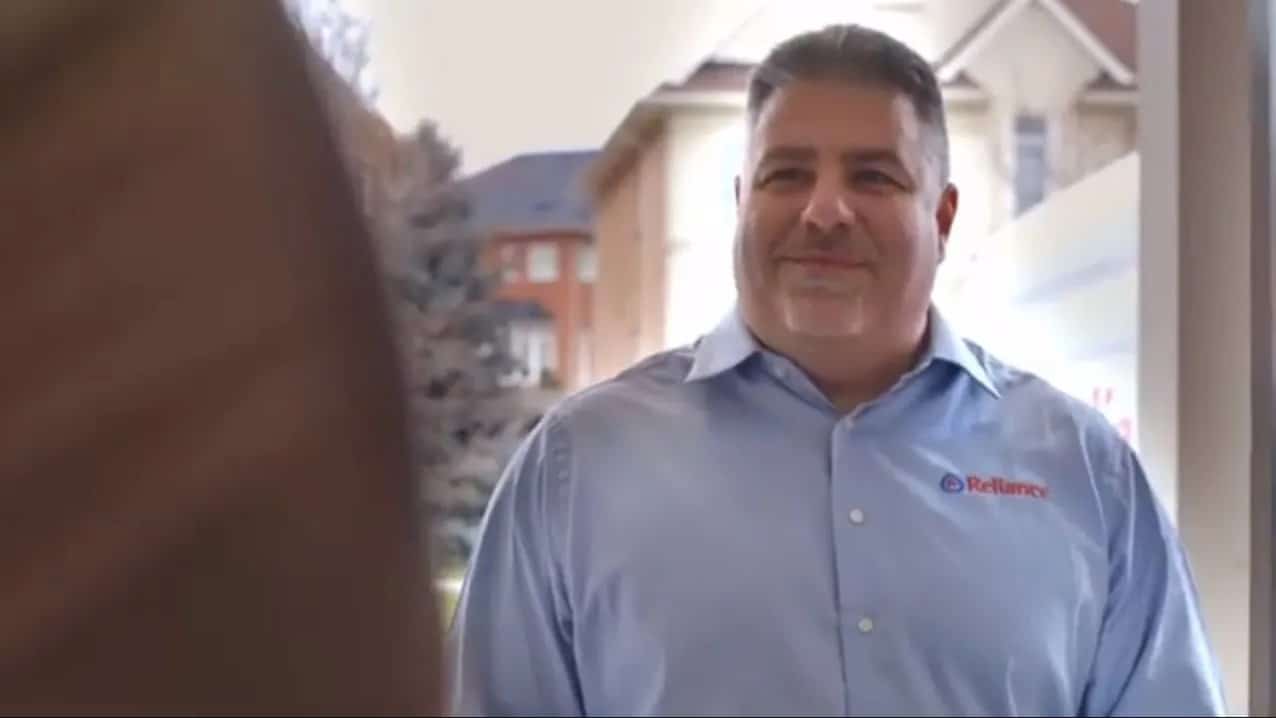
that you have an expert team installing your system. For your equipment to work at an optimal
level, your installation must be done correctly. At Reliance, our professional and licensed
installation teams provide excellent and reliable service to get your new system up and running. Our
installers arrive with all the parts and equipment required to get the job done efficiently. You can
rest easy knowing that our Team mMembers are knowledgeable professionals who are committed
to a successful installation, while always being courteous and respectful of your home. During and
following your installation, our team will check in with you to confirm that you are completely
satisfied and answer any remaining questions you may have. Once the installation is complete, our
install team will tidy up the work area, conduct appropriate safety tests and walk you through the
operation of your new equipment and thermostat. To help ensure everything goes smoothly,
before the installation, you should clear out the area around your furnace or air conditioner to
make room for the install team and new equipment. Also to ensure a safe work area, please be sure
to keep any pets and small children away from the install area. If you are looking for the
right heating or cooling solution, call us today. One of our trusted Home Comfort Advisors will be
happy to schedule time with you to go through your needs and book a time to have the right
equipment installed in your home. So for all of your heating and cooling needs, Call on Reliance™.
Installing a New Furnace
The key to having a great heating system starts with a good installation. Here are a few of the frequently asked questions about having your furnace installed.
Can I install a furnace myself?
Even if you are a handy person, installing something as complex as a new home heating or cooling system is not a good idea. A professional technician brings experience and updated knowledge of code requirements, modern electronics and new technologies. Unless you are a certified HVAC technician, a self-installed furnace could lead to a poorly operating, unsafe system.
What makes a good furnace installer?
- Good installers properly assess your needs: A reputable installer does not just take out the old furnace and put in a new, same size furnace without confirming if it is the right fit for you and your home. A professional HVAC team will take time with you and discuss your changing needs and preferences, advances in efficiencies, the size of your home, insulation and windows, sunlight exposure and other home systems.
- Good installers recommend the right configuration, size and model for your situation: An incorrectly sized furnace may wear out more quickly and could be less efficient. Oversized furnaces turn off and on frequently, which may lead to higher operating cost and shorter equipment life. On the other hand, if the furnace is too small, it may not properly heat your home.
- Good installers know what to ask about your comfort preferences: A professional team will know how to conduct a heat-loss calculation that results in accurate sizing of your system. They are also familiar with new technologies, leading brands, models and add-ons. Some brands or models offer features that are just right for your home and changing needs.
How long does a furnace installation take?
Depending on the system that you are having installed, a furnace installation can take anywhere from a half-day to a full day to be properly installed. This includes the installation, testing and clean up.
What should I expect during the installation?
Most furnace installations will be done by two professionally trained technicians. A good installation team will come on time and prepared with all the parts necessary to get the job done. The technicians should also be wearing booties over their shoes to protect your home, rolling out additional carpet and floor protection where needed.
The furnace installation itself can take a few hours and once it has been installed, the team will fire it up and conduct tests to make sure it is working properly and in sync with your other systems. Then they clean up completely, removing the old furnace, all parts and packaging.
How should I prepare for a furnace inspection?
Before the installation, you should ensure the furnace room and any other work areas are clean, clutter-free and well lit. For everyone’s safety, keep children and pets away from the work area.
Money Saver Tip
A comprehensive protection plan will include your regular maintenance and cover most unexpected repair costs.
Thermostats
Basic Non-Programmable
Basic Non-Programmable thermostats are economical and simple to control but the temperature in your home will only be adjusted when you manually change the settings of the thermostat.
Pros:
- Affordable
Cons:
- Temperature must be changed manually
Programmable
Programmable thermostats can help save on heating and cooling costs by adjusting the temperature inside of your home automatically throughout the day. These thermostats are very easy to operate and can be set to meet your changing needs – such for a work week vs. weekend. Advanced models of these types of thermostats can even switch between heating and cooling during seasons like spring and fall where you may need both.
Pros:
- Affordable
- Most models allow for multiple settings
Cons:
- Not suitable for all systems
Smart Wi-Fi Thermostats
One of the newer trends in smart home technology are smart thermostats that you can control from your computer or smartphone. These thermostats learn, remember and adjust to how, when and where you use your system. They can help you to save on your energy consumption by adjusting the temperature only when it knows you need it.
Pros
- Energy-efficient and convenient
- Remote access to change temperature via your smartphone
- Greater control of your heating and cooling could mean lower energy usage and money saved
Cons:
- More expensive than traditional thermostats
- Not every smart Wi-Fi thermostat works with every heating and cooling system
Communicating Wi-Fi Thermostats
Beyond being able to control your home’s heating from your smartphone, communicating Wi-Fi thermostats can also communicate directly with your furnace. This feature means your thermostat can receive warnings and error codes from your furnace and ensure everything stays running smoothly. They also allow the equipment to operate at its peak efficiency and to modulate its output.
Pros:
- Energy efficient
- Allows your equipment to operate at its peak efficiency
- Remote access to change temperature via your smartphone
Cons:
- More expensive than traditional thermostats
Humidifiers
Do I need a furnace humidifier?
Canadians spend about 90% of their time indoors on average. Winter poses a particular challenge because when air is heated, its relative humidity drops. Low humidity makes your home feel colder, which can lead you to turning up the heat, increasing your heating bill, causing more discomfort. A humidifier helps add humidity in the air in your home, in turn, increasing your comfort and making you feel warmer.
Whole home humidifiers
Whole home humidifiers work in conjunction with your heating and cooling system to increase humidity throughout your house.
Here are some of the advantages of whole home humidifiers:
- Precise humidity control: Whole home humidifiers have a control to monitor humidity levels and add moisture when required to improve indoor air quality
- Simple to maintain: It only needs cleaning once or twice a year and is connected directly to your home’s water supply so that you do not have to fill its reservoir
- Increased home value: Contemporary HVAC systems, including whole home humidifiers, may increase your home’s value
Tech Tip
Remember to replace or clean your whole home humidifier pad once or twice each year. This is just as important as replacing or cleaning your furnace filter.
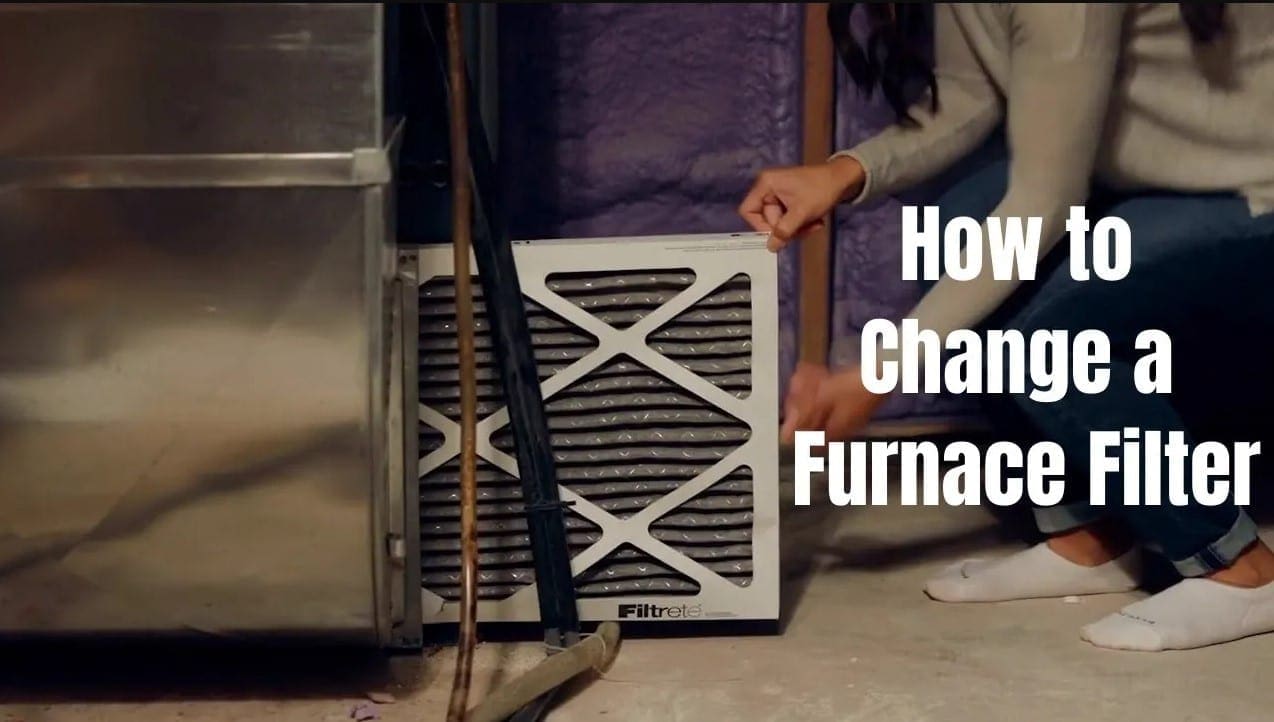
keeping you warm during the cold winter months.
But in order to keep your furnace running at peak efficiency, you’ll have to maintain
it and change the filter on a regular basis.
Furnace filters protect your furnace from dust, hair and other debris that gets drawn
in through the cold air return ducts.
If dirt gets into the furnace, it can increase fuel consumption and maintenance costs while
also reducing furnace life.
Furnace filters also remove dust and allergens from your home which can contribute to improved
air quality for you and your family.
If a filter looks dirty as you pull it out, it needs to be replaced or cleaned.
There are many types and sizes of filters.
Most have something called the MERV rating.
This is a number from 1 to 20 that identifies the effectiveness of the filter.
The higher the MERV rating, the better the filter is at capturing small particles.
A MERV rating between 7 and 13 is ideal for most homes.
Make sure the filter you choose isn’t too restrictive as this can cause your furnace
to work harder which could lead to increased energy usage and shorter equipment life.
The most common furnace filter has disposable pleated paper as the filtration element.
Pleated paper does a good job of removing most household particles and allergens with
a MERV rating of between 6 and 13.
Disposable fibreglass filters are an inexpensive option, but tend to have a lower MERV rating.
Inspect your furnace filter every 30 to 60 days.
The frequency of filter maintenance depends on a number of factors; the type of filter
you’re using, how many people live in the home, the amount of dust and if you have pets,
all affect the filter’s lifespan.
Changing a furnace filter is simple.
First, make sure your furnace is turned off so it doesn’t blow air when you remove the
filter.
Next, locate the filter housing on your furnace.
This is different for each model but you can normally find it between the air intake and
the furnace.
Open the compartment door and slide the filter out.
Compare the size and type of replacement filter with the old one.
Specifications should be printed on the side of the filter.
If size information isn’t printed on the filter frame, measure the filter yourself, rounding
up to the nearest half inch.
Slide the newer, clean filter in place with the arrows pointing towards the furnace in
the direction of air flow.
Secure the compartment cover, then turn your furnace back on.
Now all that’s left to do is set a reminder for your next inspection.
If you need assistance with any furnace maintenance or repair, Call on Reliance.
Furnace Filters
Air filters remove dust and allergens from the air inside your home, contributing to improved air quality for you and your family. In addition, filters help to stop dirt and dust from entering your equipment. When dirt gets into your system, this may make your equipment less efficient, and work harder than it has to. This can affect the expected life of the appliance, increase maintenance costs, and the chances of failure.
When it comes to selecting an air filter, there are a range of options varying in quality and price. Generally, the higher the MERV rating, the more effectively the air filter. Here are a few of the options you can consider when upgrading your furnace filters:
Fiberglass air filters (MERV 1-4): Fiberglass air filters have thin flat surfaces that capture about 20% of pollutants ranging from 3 to 10 microns, removing mainly larger particles like dust, lint and small insects. Fiberglass air filters help protect equipment but are less effective for indoor air quality. These filters should be replaced every month. These filters may not provide adequate protection for today’s higher efficiency equipment
Electrostatic air filters (MERV 6-8): Disposable electrostatic filters use self-charging electrostatic cotton or paper fibers to attract and trap small particles. They can be appropriate for homes with children, pets or smokers. You should replace them approximately every three months.
Pleated air filters (MERV 6-13): Pleated filters are popular because they capture between 70% and 90% of the airborne pollutants between 3 and 10 microns. They are made from polyester or cotton. Pleated filters should be replaced approximately every three months or as needed.
High-efficiency air filters (MERV 9-16): Some are 4”-5” pleated synthetic cotton framed by a rigid metal grid. They can trap up to 95% of particles down to 0.3 microns, tiny dust particles, mold, and pollen. The lifespan of these filters can vary so be sure to follow the manufacturers recommendations or change as needed.
Tech Tip
Air filters are categorized according to Minimum Efficiency Reporting Values or MERV ratings. MERV ratings range from 1-20. Air filters with lower MERV ratings will remove a smaller percentage of pollutants. Filters with a MERV between 7 and 12 are considered good quality.
Are you ready for the heating season? A Canadian winter can come in a flash, and you want to make sure that you and your home are ready for the cold before the temperature drops. Just like you don’t wait for your car to stop running before you change the oil, you should not wait for your furnace to break down before you have it inspected. Especially as your furnace ages, some parts become worn or dirty over time such as pilot lights, belts, motor bearings, and the burner assembly. You want to make sure that your furnace is maintained regularly to help avoid a costly breakdown during the winter.
Tech Tip
Be sure to schedule your furnace maintenance in September or October to avoid the rush!
Why should I have my furnace maintained?
- In the middle of a cold winter day is the worst time for your furnace to stop working, you want to make sure any issues are identified earlier
- Even if your furnace does not stop working, it might be performing poorly resulting in more strain on your equipment
- A poorly performing furnace could cost you more to operate
- Replacing a furnace is expensive compared with the cost of a few periodic checkups
Can I inspect the furnace myself?
By all means, check and change your filters, but unless you are a qualified HVAC technician, it is not safe to attempt to fully inspect your own furnace.
Tech Tip
Do not try to open or repair a furnace. Unless you are a qualified furnace technician, never attempt to remove the door or open the furnace in any way. Electronics and anything inside your furnace are for professionals only
Who should maintain my furnace?
There are a few things that you will want to keep in mind when deciding which HVAC company you want to have tune-up your furnace:
- Look for a company with technicians that have a fast response time and avoid those that take days to respond to a call
- Do some online research and read their reviews to see if others have had a positive experience with the company
- Find a company with highly trained technical experts who specialize in different HVAC solutions
- Look at how many service calls the company does each year
What should I do before the furnace inspection?
Before the technician arrives, help ensure safety for everyone by clearing the furnace room and the path to the equipment of any clutter or other items. Replace bulbs to ensure adequate lighting. It is a good idea to have a spare furnace filter on hand. The technician can then check the filter system, and if needed, install the new filter for you. For everyone’s safety, separate and keep your children and pets away from the work area.
Upgrade your home comfort with our special offers
Check Out Our Offers Today!
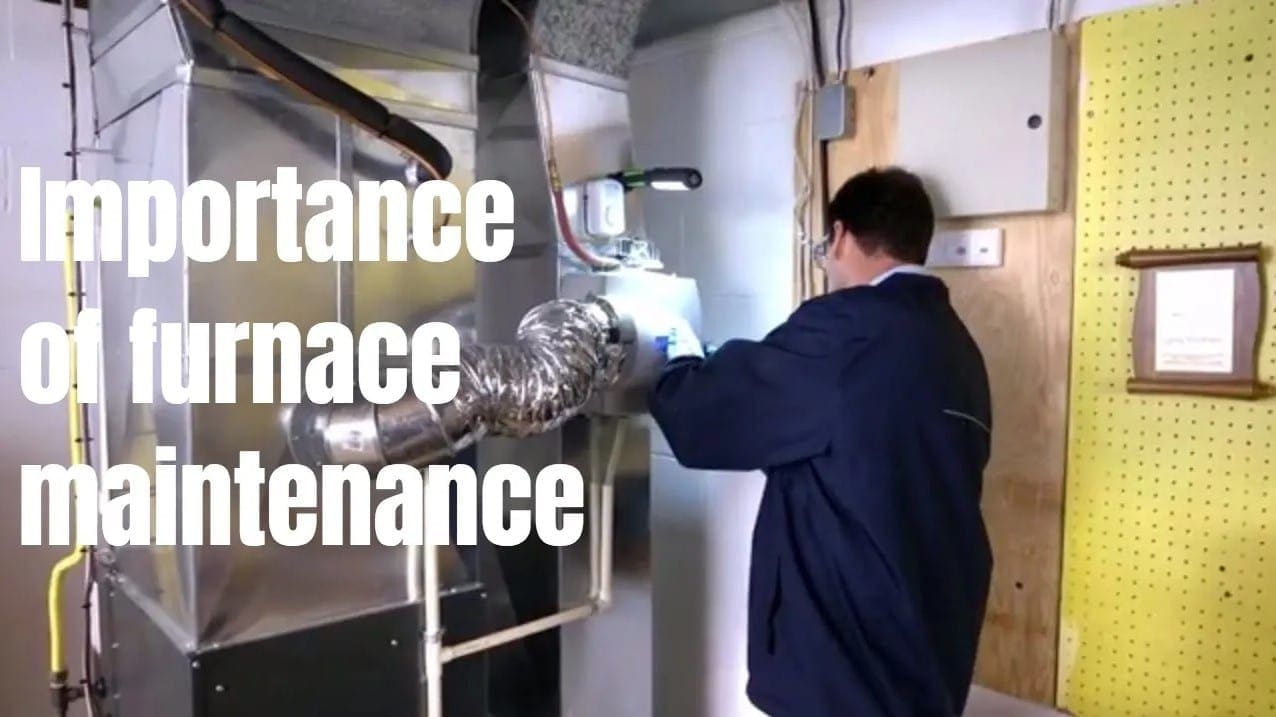
but did you know that it’s also key to running your air conditioner in the summer? That means
your furnace is working all year round to keep you and your family comfortable. Considering
your furnace is putting in that much work year after year, it’s important to make sure your
system is inspected regularly to keep it running smoothly. Regardless of the age of your furnace,
regular maintenance can help identify issues early to avoid costly breakdowns. An inspection
will also help ensure your system is running optimally, giving you and your family comfort
and peace of mind. At Reliance as part of our maintenance, one of our friendly and knowledgeable
experts will check all the necessary components of your heating equipment including the thermostat,
heat exchanger and blower motor. They will also inspect your system’s wiring as well as the filter
which can help deliver optimal air quality and efficiency. Don’t wait until something goes wrong
to have your system inspected because winter will be here before you know it. Schedule maintenance
early so you don’t get caught in the cold. Call us today. With 24/7, 365 live telephone support
we’re here to help when you need it the most. If you’re looking for a peace of mind all year round,
consider one of our Protection Plans. Our Heating and Cooling Plans can help avoid most unexpected
repair costs. If any problems with your systems arise, we also offer plans that ensure your
maintenance is always covered. So remember, for all of your heating needs Call on Reliance™.
Maintaining Your Furnace Filter and Humidifier
Preparing Your Home for Winter
Try not to leave it until the last minute when snow is piling up outside. But life happens, and your service company should be happy to undertake a checkup even well into winter. Try to book furnace maintenance for September and October before the rush.
1. Consider a protection plan
Put your furnace inspections and regular service on autopilot, by signing up for a compressive protection plan to make sure you are always covered. Learn more here.
2. Make sure the furnace is turned on
It seems obvious, but it does happen that the furnace gets turned off and not turned back on.
3. Check the batteries & test the thermostat
If your thermostat has batteries, check the batteries. Now might be a good time to also check the batteries in smoke alarms and carbon monoxide detectors. Some people choose to check their batteries twice a year at the same time they adjust their clocks for daylight savings time.
It’s easy to test a thermostat. Just check the temperature level and turn it up about 5 degrees higher. Your furnace should come on within a few minutes. If it does not come on, there is a problem with either the thermostat or the furnace. Change the batteries if applicable and if that does not help, call a professional and have them inspect your furnace and thermostat.
Safety Tip
When you are doing maintenance around your home, be sure to replace the batteries and test both your fire alarm and carbon monoxide detector. This should be done at least twice a year.
5. Change the air filters
Furnace filters, humidifier pads, ventilator filters all require checking and regular replacement. The best way is by changing or cleaning your furnace filter, humidifier pad and any other equipment filters in your system. For more information on filters see the filter section below or click here.
6. Keep intake and exhaust vents & grilles clear and clean
Clutter, dust and dirt are the enemies of your home’s heating, cooling and ventilation system. Clean and unblock areas in front of heating grills, radiators, intake vents and outside exhaust vents.
7. De-clutter the furnace room
Keep your furnace room and all areas around your furnace clean and clutter-free. If your furnace room is also your laundry room, do not hang wet items on furnace equipment as it can create a serious fire risk. Store all items away from your heating equipment and provide clear access to your furnace at all times.
If your furnace is in need of repair, it is important not to leave it. Depending on the problem you are facing ignoring the issue will not only leave you cold this winter, but may also further damage the equipment. For most problems, it is best to call a licensed and trained HVAC technician to come and inspect and repair the system to ensure the system is fixed properly.
For more information about having your furnace fixed, here are a few frequently asked questions for the most common furnace issues:
If it is not working or not working right, the on switch might be off, the breaker may have tripped, the thermostat might be set wrong, and the filter might be very dirty, the air ducts might be physically blocked or the dampers might be closed. If you have checked these items and it still is not working, it is time to call a professional and have it inspected.
If it is blowing cold air your thermostat fan setting might be set to ON. Change it to AUTO so that it only blows when there is warm air to blow.
If your furnace is leaking water, it is usually related to condensation leaking from a blocked or damaged hose used in a high efficiency furnace, air conditioner or humidifier. It might also be the water supply to the humidifier. All leaks should be referred to a qualified technician.
Popping or banging sounds especially if they occur after the blower turns off, are usually caused by expansion and contraction in the ductwork. A squeaking noise during operation may mean worn out fan bearings. A scraping sound could be a blower wheel fault. Tapping may indicate something caught up in the blower blades. Buzzing often relates to a problem with a transformer box. All furnace sounds should be checked by a qualified technician.
Cost increases can be caused by different occupants, usage patterns, or weather, higher fuel prices. If none of this sounds right, check that your filters are clean, your vents are unblocked, and that your thermostat settings are proper. If none of that solves the problem, you might need a cleaning and inspection.
This should really be left to a professional, but carbon monoxide alerts, odours, soot, changes to burner flame and metal discolouration might all point to a cracked heat exchanger. Professional technicians may use a special camera or combustion analyzer to provide a more accurate diagnosis.
Upgrade your home comfort with our special offers
Check Out Our Offers Today!
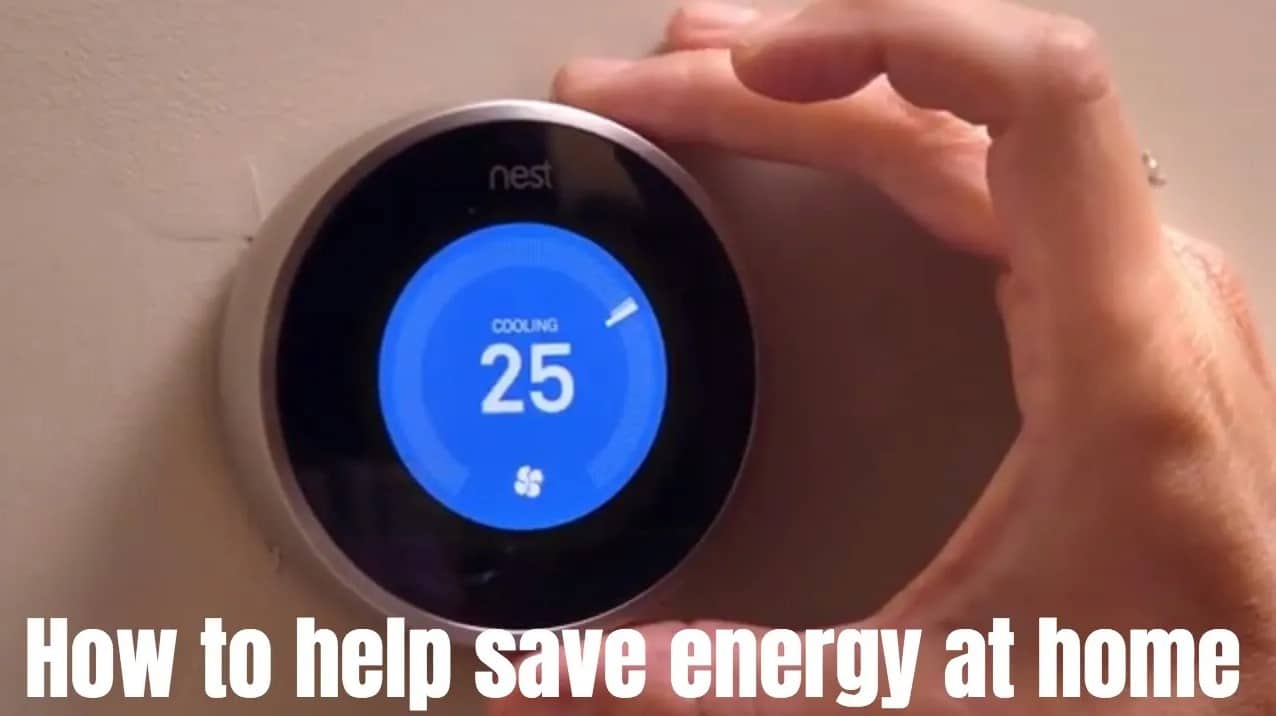
With the high price of energy, finding ways to make your home more energy-efficient is top of
mind for all of us. Whether you’re trying to be environmentally friendly or reduce your monthly
utility bills, there are a few things that you can do to help lower your energy consumption. First,
consider upgrading less efficient equipment to a high-efficiency system and schedule
regular maintenance with a trusted and professional HVAC technician. It takes
a lot to keep your heating and cooling equipment running so you want to make
sure that your system is operating smoothly and as efficiently as possible. Second,
be sure to replace your furnace filter regularly. Not only can this help with indoor air quality,
it can also help keep your furnace from overuse. A dirty furnace filter causes your furnace’s
blower motor to work harder to move the warm air throughout your home. That means it takes more
energy for your furnace to keep your home at your preferred temperature. So be sure to follow the
manufacturer’s recommended replacement cycle to help avoid unnecessary energy consumption. Third,
think about upgrading to a programmable or smart learning thermostat. This new type of thermostat
will regulate itself automatically by recording your usage patterns, eventually learning the exact
temperature you like at each time of the day to minimize energy waste. And lastly, consider
implementing zoning options for a targeted temperature in different areas of the home,
directing heat to only the areas where it’s needed, when it’s needed, can make a difference
in your home’s energy use. There are also other simple ways that you can help bring down energy
consumption like ensuring your doors and windows are well-insulated and sealed or by using ceiling
fans to help distribute warmed or cooled air throughout your home. If you have questions
about energy savings in your home or are looking to upgrade to more energy-efficient heating and
cooling equipment call us today. Our knowledgeable team of Home Comfort Advisors are committed to
answering your questions, assessing your needs and will help find the right energy-saving solution
for you and your home. So remember for all of your home comfort needs, Call on Reliance™.
No one wants to break the bank trying to keep their home warm and comfortable during the cold winter months. Help to keep your energy costs down as the temperature dips by implementing a few of these simple tips:
- Keep curtains and blinds open: Just because it is cold outside does not mean that the sun is not still strong; by opening the curtain and blinds in your home you can use the sun as a natural source for heat.
- Upgrade to energy efficient equipment: If you are looking to replace your furnace, check to see if the unit that you are considering is ENERGY STAR® certified to ensure it is efficient.
- Switch your home’s thermostat: Upgrading your thermostat to a programmable or smart thermostat allows you to take control of the temperature in your home and your energy bill.
- Use ceiling fans: Ceiling fans are not only for the hot summer months; by switching the fan direction to clockwise you can better distribute warmed air.
- Bundle up: A simple and inexpensive way to keep warm when the temperature drops is to opt for an extra sweater or cozy up with a blanket instead of cranking the heat.
Energy Tip
Upgrading both your furnace and your air conditioner to efficient models at the same time will help you maximize your energy savings.
If you have any questions about cooling your home or are looking for a new air conditioner, Call on Reliance® today to schedule time with one of our trusted Home Comfort Advisors. The advisor will assess your home and discuss your needs to find the right solution for you and your family.



